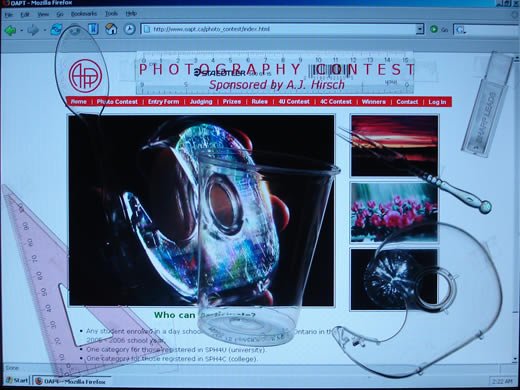 |
P H O T O G R A P H Y C O N T E S T Sponsored by A.J. Hirsch |
Solomon Fung
First Place
2006 OAPT 4U Photo Contest


Cross Polarization of Plastics
Both photos show the exact same clear, plastic objects taped to the front surface of an unchanging LCD computer monitor. The only difference is one thing – that the second photo was taken with a polarizing filter. Liquid crystal displays consist of a layer of nematic liquid crystal embedded with electrodes and sandwiched in between two polarizing filters. Since the light emitted to the viewer passes through these layers, the light produced from LCD monitors is polarized. The polarizing filter in front of the camera lens was positioned perpendicularly to the outer polarizing filter of the monitor. Light waves consist of oscillating electric and magnetic fields and because polarizing filters only allow oscillations in a particular axis, two crossed polarizers would not allow any light to pass through. This is why the monitor appears dark. However, transparent plastic materials are birefringent when under stress, meaning that they have more than one index of refraction. Because of this, when the plastic is placed between the polarizers, the polarized light that hits the plastic splits the light waves into different components with altered polarizations. The second polarizer filters this light depending on thickness, causing stressed areas to show different colours. Crossed polarizers visualize the relationship between birefringence and stress, making it extremely useful for engineers to determine strain distribution in various structures and products.